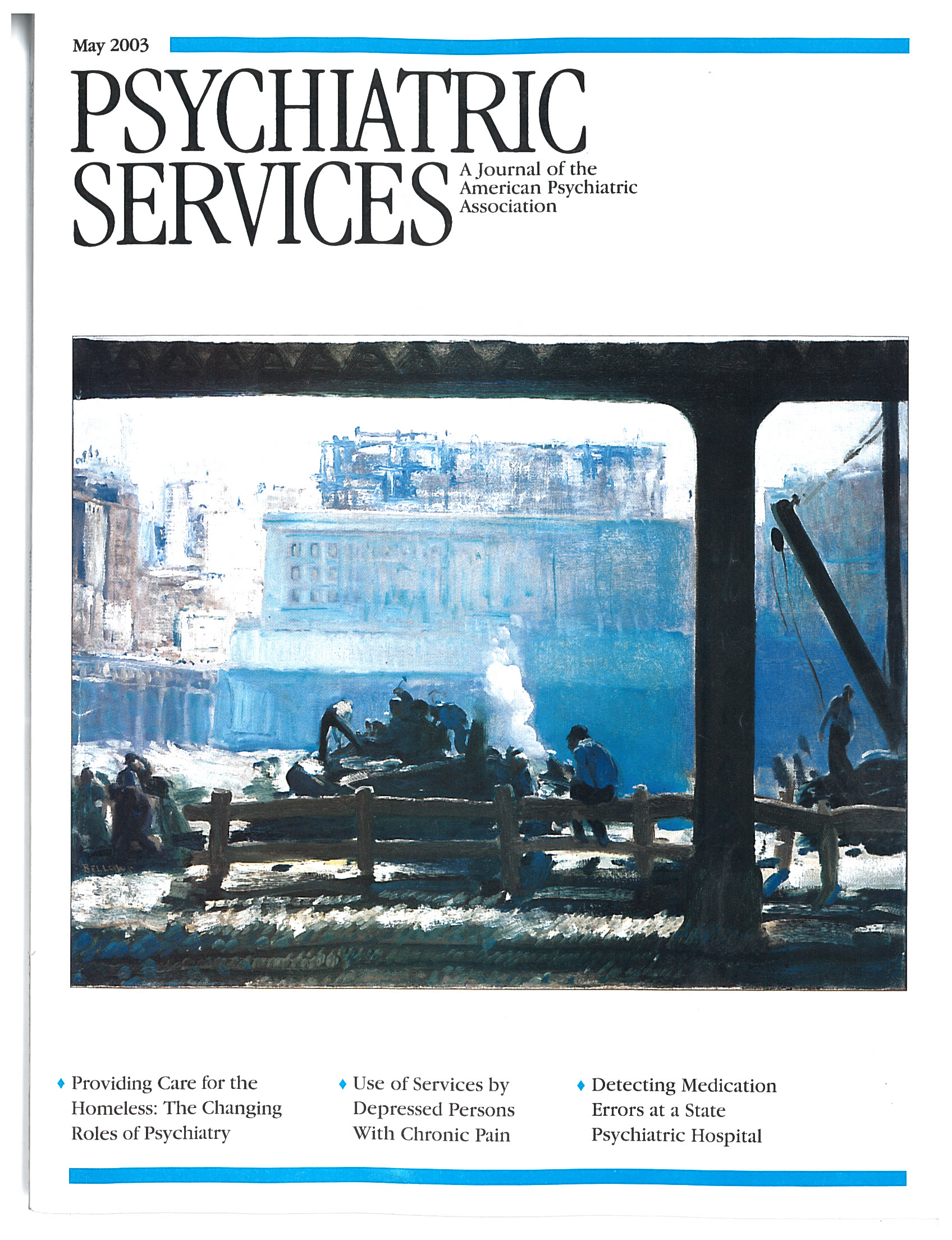Suicide and Schizophrenia
To the Editor: We read with great interest the article by Dr. Comtois (1) about interventions to reduce the prevalence of parasuicide. We emphasize that the recognition of risk factors is a major element of prediction and prevention of suicidal behavior. We also acknowledge the fact that suicide is the leading cause of death among patients with schizophrenia, and a deeper understanding of the factors that predispose such patients to suicidal behavior, in particular parasuicide, must constitute a new challenge in their treatment.
Follow-up studies have estimated that 10 to 13 percent of people with schizophrenia die by suicide (2). Most authors agree that those with the disease who are more likely to commit suicide are young, male, and white; have never married; have good premorbid function; and have postpsychotic depression and a history of substance abuse and suicide attempts. Hopelessness, awareness of illness, social isolation, and hospitalization are also very important risk factors among people with schizophrenia who commit suicide.
Compared with suicide attempts among persons without schizophrenia, attempts among those with schizophrenia are serious and typically require medical attention. Intent is generally strong, and the majority of those who attempt suicide have made multiple attempts. In addition, the methods used to attempt suicide are considered more lethal than those used by suicidal persons in the general population.
Gupta and colleagues (3) reported that in their sample of patients with schizophrenia, suicide attempts were associated with the number of lifetime depressive episodes. Depression has been recognized as a major risk factor among persons with schizophrenia who have attempted suicide. Also, Roy and associates (4) found that significantly more of their sample of patients with schizophrenia who had attempted suicide had suffered from a major depressive episode at some time during their illness.
Great caution is required in the period after hospital discharge, because patients with schizophrenia usually experience hopelessness and demoralization. For these patients, discharge often means losing the hospital environment and the people who in some way have become central in their life. The number of psychiatric admissions, which are usually higher among patients who have attempted suicide, may be indicative of a severe relapsing illness (4).
Nevertheless, Drake and colleagues (5) found in their sample of patients with schizophrenia that those who had attempted suicide were trying to manipulate others, consolidate support, or gain entrance to the hospital. Attempts frequently occurred in the context of interpersonal conflict, such as arguments with family or housemates, rather than isolation. These authors suggested that impulsive attempts were associated with dysphoric side effects of medication, such as akathisia.
In 1999 the Surgeon General's call to action to prevent suicide estimated that in the United States there are 16 attempted suicides for each completed suicide. No doubt, people with schizophrenia do contribute excessively to this figure. Clinicians should be aware that suicidality can change rapidly among patients with recent-onset schizophrenia. Especially among young people, suicide and attempted suicide are considered a valid solution to escape an unsustainable situation or to deliver a message when they can find no appropriate words to describe their illness.
Protocols to treat suicidal behavior among people with schizophrenia should always be considered in the struggle against suicide.
The authors are affiliated with the department of psychiatry and the department of psychological medicine at La Sapienza University in Rome.
1. Comtois KA: A review of interventions to reduce the prevalence of parasuicide. Psychiatric Services 53:1138-1144, 2002Link, Google Scholar
2. Caldwell CB, Gottesman II: Schizophrenics kill themselves too: a review of risk factors for suicide. Schizophrenia Bulletin 16:571-589, 1990Crossref, Medline, Google Scholar
3. Gupta S, Black DW, Arndt S, et al: Factors associated with suicide attempts among patients with schizophrenia. Psychiatric Services 49:1353-1355, 1998Link, Google Scholar
4. Roy A, Mazonson A, Pickar D: Attempted suicide in chronic schizophrenia. British Journal of Psychiatry 144:303-306, 1984Crossref, Medline, Google Scholar
5. Drake RE, Gates C, Cotton PG: Suicide among schizophrenics: a comparison of attempters and completed suicide. British Journal of Psychiatry 149:784-787, 1986Crossref, Medline, Google Scholar



